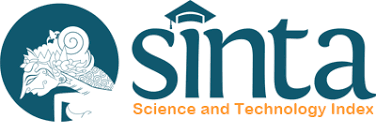NGELONG CULTURE OF THE KASONG MANGGARAI TRIBE IN THE LIGHT OF MARTIN BUBER’S DIALOGICAL PHILOSOPHY
DOI:
https://doi.org/10.55981/jmb.2022.1495Keywords:
Ngelong Culture, I and Thou, Dialogic philosophy, Responsibility, Reconciliation, Respect, The sense of Religious.Abstract
The focus of the discussion of this paper is to explore the meaning and philosophical values behind the Ngelong culture of the Kasong tribe of Manggarai-Flores-NTT. The methodology of the discussion perspective uses phenomenological philosophy, namely, the author works on philosophical issues in the form of local wisdom, especially those concerning relationality with nature and the environment, and at the same time dialogues with Martin Buber’s dialogical philosophical thinking. The approach used to explore the Ngelong culture is a qualitative approach by referring to several literature sources and interviews. The purpose of the discussion of this paper is first, to understand more deeply the philosophical meaning behind the local wisdom of the Ngelong culture of the Kasong Manggarai tribe about Martin Buber’s Dialogue Philosophy.
Downloads
References
Antonius Atosokhi Gea. (2002). Relasi dengan Sesama. PT. Gramedia.
Armada Riyanto. (2018). Relasionalitas Filsafat Fondasi Interpretasi: Aku, Teks, Liyan, Fenomen,. Kanisius.
Buber, M. (1987). I and Thou. The Cammelot Press PLC.
Friedman, M. (1967). The Philosophy of Martin Buber. In M. F. dan P. A. Schilpp (Ed.), The Philosophy of Martin Buber. The Library of Living Philosopher.
Friedman, M. S. (1955). The Life of Dialogueitle. The University of Chicago Press.
Hadis Badewi, M. (2016). Relasi Antarmanusia Dalam Nilai-Nilai Budaya Bugis: Perspektif Filsafat Dialogis Martin Buber. Jurnal Filsafat, 25(1), 75. https://doi.org/10.22146/jf.12615
Heydemans, N. A., & Langi, F. M. (2019). Rekonsiliasi Pemuda dengan Alam. Jurnal Studi Pemuda, 8(2), 156. https://doi.org/10.22146/studipemudaugm.48448
Hia, R. (2015). Konsep Relasi Manusia Berdasarkan Pemikiran Martin Buber. Melintas, 30(3), 303. https://doi.org/10.26593/mel.v30i3.1448.303-322
Hilal, M. (2014). Tuhan dalam Filsafat Dialog Martin Buber. Jurnal Pusaka.
Keraf, S. (2014). Filsafat Lingkungan Hidup. Kanisius.
Pancha Yahya. (2001). Mengenal Martin Buber dan Filsafat Dialogisnya. Veritas : Jurnal Teologi Dan Pelayanan, 1(April), 37–50.
Pandor, P. (2014). Seni Merawat. Obor.
Putra, D. A. (2021). Merengkuh Bumi Merawat Semesta: Mengupayakan Hermeneutik Ekologis dalam Rangka Menanggapi Kerusakan Lingkungan Dewasa Ini. Aradha: Journal of Divinity, Peace and Conflict Studies, 1(1), 71. https://doi.org/10.21460/aradha.2021.11.537
Robert E. Wood. (1969). Martin Buber’s Ontologi- an Analisis of I and Thou,. North Univesity Press.
Rumyaru, B. (2018). “Top Ten”, Citra Relasional Manusia Dalam “Trias Entitas” Tinjauan Kritis-Dialogis Pandangan Buber Dan Heidegger. Expose: Jurnal Ilmu Komunikasi, 1(1), 9–18. https://doi.org/10.33021/exp.v1i1.366
Verheijen, S. (1991). Manggarai dan Wujud Tertinggi. Lembaga Pengetahuan Indonesia.
Balar, Romanus (60 tahun). Wawancara, 25 Oktober 2021.
Published
Issue
Section
Copyright (c) 2022 Agustinus Asman, F.X Eko Armada Riyanto

This work is licensed under a Creative Commons Attribution-NonCommercial-NoDerivatives 4.0 International License.
Authors who publish with this journal agree to the following terms:
- The copyright for articles in this journal is retained by the authors.
- Authors grant to the journal first publication rights and the right to distribute the article, including the journal's web site, online data bases and other similar forms.
- Authors agree to license their work according to Creative Commons Attribution-NonCommercial-NoDerivatives 4.0 International License.
- Articles published in JMB are free to use for non-commercial uses as long as the authors and the journal are attributed properly and the new creations are licensed under the indentical terms (license Creative Commons (CC BY-NC-ND 4.0).
- Authors retain the right to reproduce and distribute their articles in any format, without prior authorization, with the proper acknowledgment to the first publication.
- If the article contains copyright material owned by others, authors should obtain written permission from the copyright owner/s in order to reuse the material. Appropriate acknowledgment should be included.
- Authors are encouraged to post their article online (in institutional repositories, personal websites etc). Any such posting must include a reference and a link to the journal's website.
Penulis yang menerbitkan pada jurnal ini menyetujui ketentuan berikut:
- Hak cipta untuk artikel dalam jurnal ini disimpan oleh penulis.
- Penulis memberikan kepada jurnal hak publikasi pertama dan hak untuk mendistribusikan artikel, termasuk situs web jurnal, basis data online dan bentuk serupa lainnya.
- Penulis setuju untuk melisensikan karya mereka sesuai dengan Creative Commons Attribution-NonCommercial-NoDerivatives 4.0 International License.
- Artikel yang diterbitkan dalam JMB bebas digunakan untuk penggunaan non-komersial selama penulis dan jurnal dikaitkan dengan benar dan kreasi baru dilisensikan menurut istilah indentis (lisensi Creative Commons (CC BY-NC-ND 4.0).
- Penulis mempertahankan hak untuk mereproduksi dan mendistribusikan artikel mereka dalam format apa pun, tanpa izin sebelumnya, dengan pengakuan yang tepat untuk publikasi pertama.
- Jika artikel tersebut berisi materi hak cipta yang dimiliki oleh orang lain, penulis harus mendapatkan izin tertulis dari pemilik hak cipta untuk menggunakan kembali materi tersebut. Pengakuan yang tepat harus disertakan.
- Penulis didorong untuk memposting artikel mereka secara online (dalam repositori institusional, situs web pribadi dll). Setiap posting seperti itu harus menyertakan referensi dan tautan ke situs web jurnal.

.png)









